Working as a BIM Coordinator, I often encountered a situation where, during the model control, the number of collision issues exceeded several hundred or even several thousand.
I have often wondered: What is wrong with these designers?
– Don’t they see all these collisions while designing?
– Why don’t they link models from other disciplines to avoid conflicts with their model?
I blamed the designers for my often tedious working hours, going throught issue after issue, adding comments, sending and analyzing long clash reports.
Now, when I look back, I know that it wasn’t their fault but it was mine. My model checks were performed in the early design stage when object geometry and its position were still uncertain and might easily change. It made no sense.
So I needed something to control the maturity of the models. Something that clearly informs me whether specific model objects are ready for coordination or not. This is how I started using the Status Codes.
What are they and how do they work? You will learn from this post.
LOD, or Status Codes
Currently, the industry uses various practices to mark BIM models in terms of developement of geometry and information. One of them is LOD as an indication of the maturity of BIM objects. We have alredy mentioned about LOD many times on our blog (read more here).
This acronym is translated in many different ways. Some call it Level of Development, some call it Level of Detail. In the international BIM ISO-19650 standard, it is referred to as the Level of Information Need. Different abbreviations for similar mechanism.
As there are many interpretations of LOD that can create unnecessary confusion among designers, I personally do not use it to mark the readiness of model objects for BIM control.
I like simplicity – for me markings have to be simple and very clear, tailored to the needs of the project, and at the same time answer one question:
Is this model element ready for BIM Coordination or not?
In my opinion, the status codes are well suited for this role.

DO YOU WANT TO BECOME A BIM COORDINATOR ? I AM BUILDING AN ONLINE PROGRAM TO BOOST YOUR CARRER IN BIM
What are Status Codes ?
From a technical point of view, the status code is a parameter located in each object of BIM models that go throught diciplinary or multidisciplinary coordination process (about multi-industry coordination you can read here).
This parameter have a specific numerical value that is previously specified in the project BIM Execution Plan (more about BEP)
Like LOD, status codes describe the degree of maturity of objects in BIM models using the appropriate numeric codes. However, the status codes clearly define whether a given part of the model is ready for coordination or not. These codes give a better understanding of where we are in the BIM quality assurance process.
During the coordination process, they mainly help define:
- which model object is ready for disciplinary and multidisciplinary control,
- which object has already been coordinated,
- and which is still in the design phase.
What Status Codes do we have ?
There are no predefined rules what numerical values a specific status code should have . On some projects I have seen that they are marked as consecutive numbers just:
(SC – Status Code) SC-1, SC-2, SC-3 etc.
In others, I have seen the similar numbering to that used in the LOD:
S-100, S-200, S-300, S-350, S-400
The numbering itself is not a key here but it is important to remember that:
- the numbering should go ascending, which show an increasing degree of maturity of the modeled objects and readiness for coordination,
- numbering should be easy to remember – i.e. numbering in the following way: SC-356, SC-678, SC-793 will probably be a bad idea.
It’s best to use easy-to-remember numbers like: 1, 10, 200, 350 etc.
- the numbering should be specified in the project BIM documentation and associated with a specific color. This is very helpful in identifying objects visually.
For example – here is a table of applied Status Codes for the project of a new metro line in Oslo – Fornebunanen:
And below we see a visual representation of the presented above status codes, in a BIM model:
Using Status Codes in coordination
The above table from Fornebubanen is just one example of how we can apply the Status Codes in our project.
Below I present how I used them on one of the projects:
The first status is:
SC-10 – Concept element is established
This status was added to each 3D object in the model during creation. Element is predefined in terms of location and geometry. The dimensions of the object are not yet fully known. Moreover, the information requested by the client / investor has not yet been implemented. It can be briefly said that this is the initial “life” state of the model objects.

Between this status and the next one, we have a design development phase in which the objects become more and more detailed. Their location and dimensions are already precisely defined, and the information contained therein complies with the requirements. During this phase, each discipline carries out internal coordination as a first form of model verification. Objects with such status are marked in yellow.
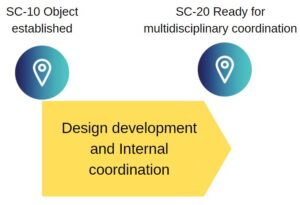
SC 20 – Ready for multidisciplinary coordination
All objects with this status must be coordinated within each discipline model. Objects essential for multidisciplinary coordination must be modeled and can not conflict with other objects in the same discipline. Objects must have the correct dimensions and location. Objects with such status are marked in green.
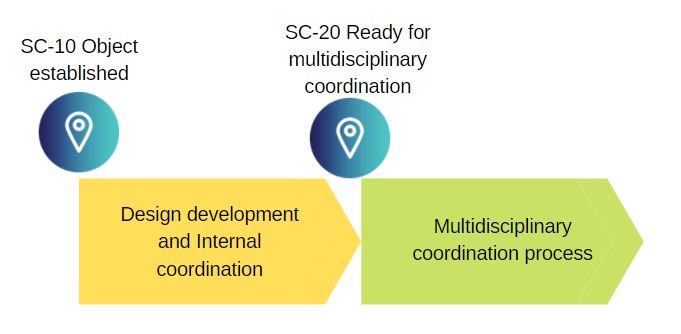
Between this status and the next one, there is a multidisciplinary coordination phase. BIM Coordinator collects all industry models for control.
Multidisciplinary coordination is an iterative process. When the final control between all disciplines shows no real conflicts, only then the model objects reach the next status.
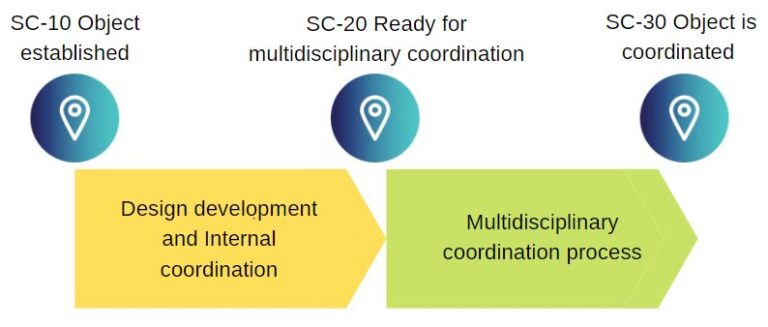
SC-30 – Object is coordinated
After reaching SC-30, model elements must be coordinated with respect to all other trade models. There are no real 3D conflicts in the model.
Moreover, all required information as described in the BEP is implemented in the model. Objects are marked in blue.
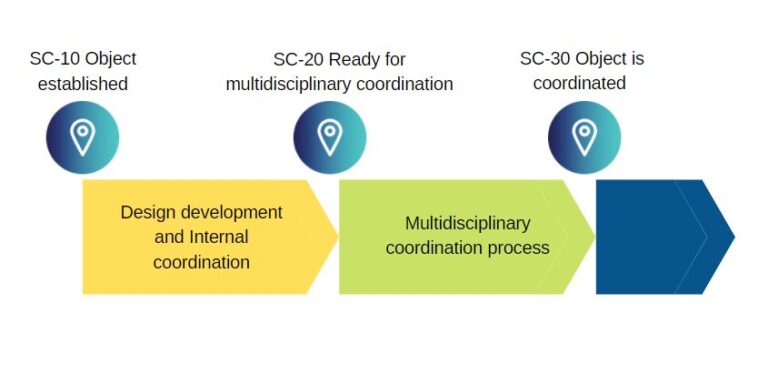
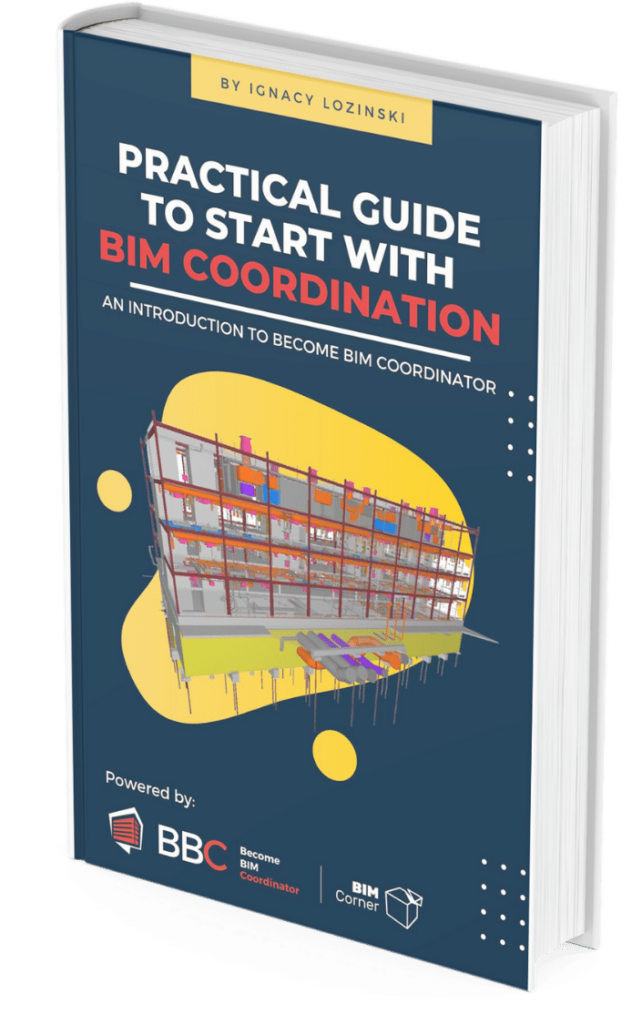
DOWNLOAD BIM COORDINATION GUIDE
Subscribe to our list and download Practical Guide to start with BIM Coordination.
Interactive BIM Coordination guide full of tips, graphs, mind maps, and practical exercises.
It will teach you the basics of BIM Coordination. All for free.
To sum up
If you are working on project where you coordinate BIM models, think about applying some form of object filtering in terms of their readiness to coordination.
Whether you will be using the status codes, LOD parameters, or other form of model maturity marker, it doesn’t matter that much.
It is important to consciously distinguish which parts of the model are before the coordination process, which are after and which are during it. Thanks to this approach, the BIM Coordination process will be more effective and less time-consuming.
I hope this article somehow helps you better control your BIM models. If you have any question for me, or a comment to this article itself, feel free to write in the section below. See you in the next post 🙂
Above mentioned status codes were a simple marker for me and the rest of the project team. We could clearly see which parts of individual models are already checked and which are still in the design development phase.

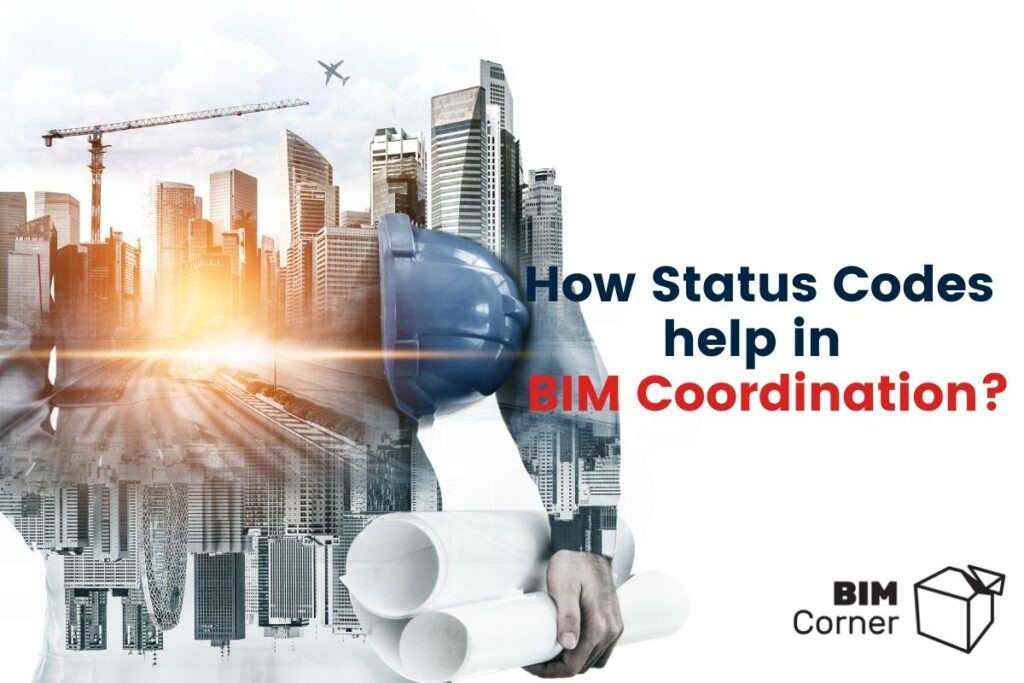
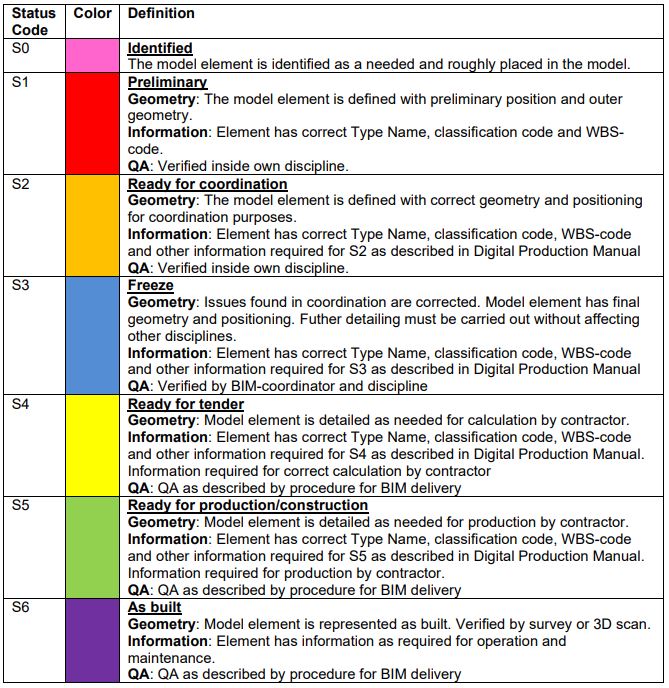
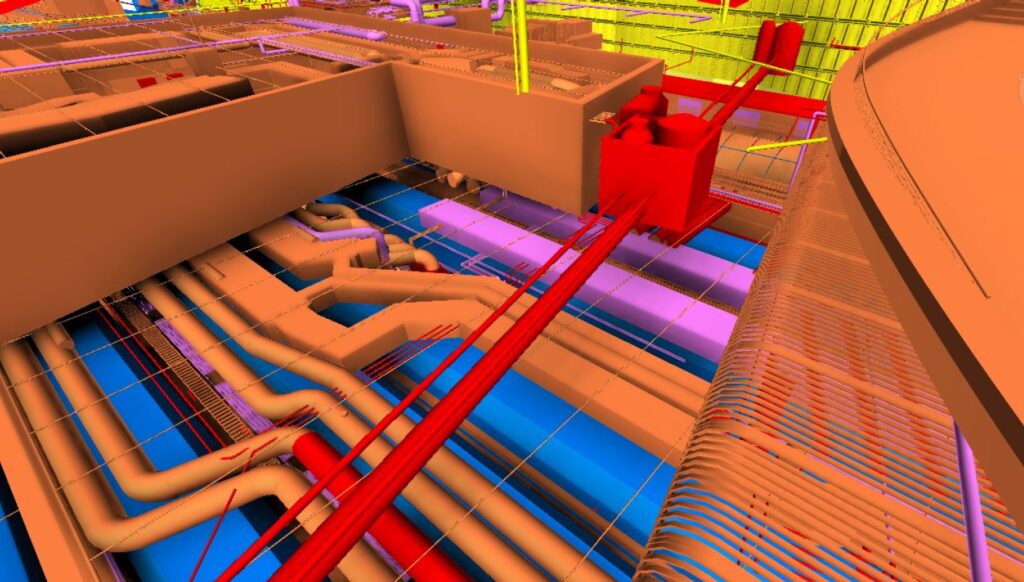
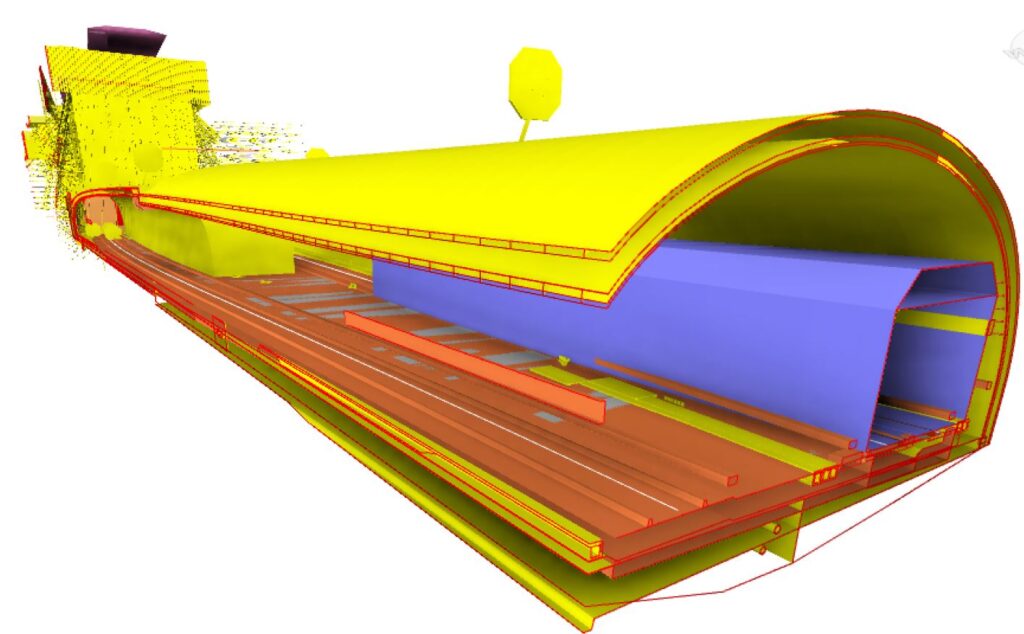







Hi Ignacy! Loved the post 🙂 I have two questions if you can help me:
Thank you so much for sharing this information!
Hi Juan,
Thanks for a good words 🙂 As you wrote, all SC10 are predefined, SC 20 status is set by each discipline when their model goes through internal check. I worked on projects where there was a BIM Specialist responsible for each discipline who set those statuses whenever their model (part of the model) was ready.
All statuses are set in modeling tool. BIM Coordinator do his check, if everything goes ok, then BC inform BIM Specialist for each discipline to change the Status Code, to a proper one. If there are some elements which need correction then Status Code is not changed and wait for correction.
I hope I clarified it. Cheers
Hi again Ignacy 🙂
Your answer was pretty clear, thank you so much!. I am into a coordination of a medium size model but very complex in terms of MEP, so I am implementing this status codes and was passing a BCF with all the elements that needed to be checked as coordinated, but was not sure if it makes sense to be done that way. Now, with your answer, I know its ok.
Again, thank you so much! I am loving this blog. Also, I am looking forward to get BBC, any release date planned?
Good to know Juan, that you find our blog useful. We are happy to help:) I am still in the production phase of BBC. I think it will be ready in June, but I am not sure if I will sell it then or wait until September for release. Always vacation months are rather “quiet”. So I do not want to release in it this period. Anyway, I will keep you informed 🙂 Thanks for the comment, and wish you luck with your project.
Cheers,
Ignacy
is there relation between codes of elements ( S0 , S1 , S2 , etc. ) and project stages especially design stages
could you clarify with an example of a digital production manual and what requirements should be on it?